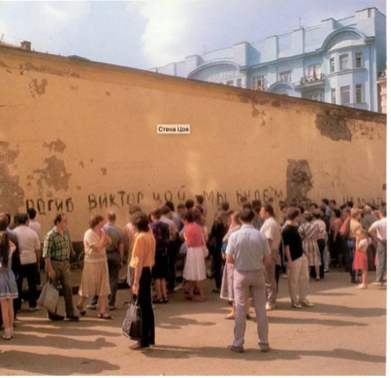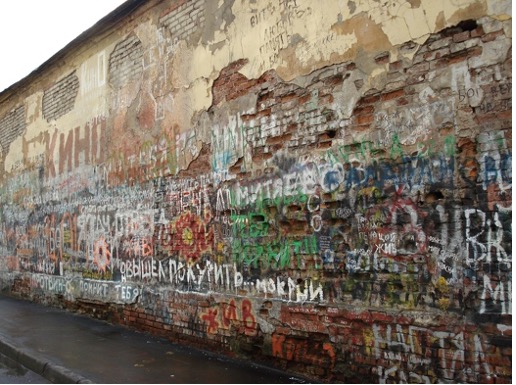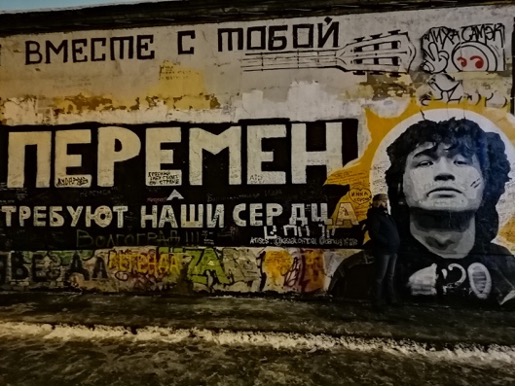Filed Under: Print > Visual arts > “Tsoi Wall” at 37 Arbat Street in Moscow
“Tsoi Wall” at 37 Arbat Street in Moscow
[3 items]
On 15 August 1990, the day Kino frontman Viktor Tsoi (1962-1990) tragically died, a single inscription appeared on the side of a building on Moscow’s famous 37 Arbat Street, on the corner of Krivoarbatsky pereulok: “Viktor Tsoi died today. Our respect to you.” (Segodnia pogib Viktor Tsoi. My budem uvazhat’ tebia). From this single inscription arose the so-called “Tsoi Wall” (Stena Tsoia), one of the oldest and most enduring examples of commemorative street art—originating in the USSR and evolving to the present day.
Sometime after the first fan broke the ice, a defiant response appeared: “Tsoi lives” (Tsoi zhiv), a phrase echoing lines from Futurist poet Vladimir Mayakovsky’s (1893-1930) epic 1923-4 ode to founding Soviet leader Vladimir Lenin (1870-1924): “Lenin lived… Lenin lives… Lenin is to live forever!” Unlike the hoary Soviet slogan, however, “Tsoi zhiv” aroused genuine enthusiasm, and was subsequently inscribed on countless residential buildings, schools, and other public spaces across the USSR as a self-perpetuating public tribute to the late musician.
The wall became a significant pilgrimage site for Russia’s growing subculture of Kino fans, with young people holding vigils at the site, using the wall to communicate with one another, and taking photographs of its changing visual content. Tsoi’s enduring legacy and cultural status has undergone changes over the three decades since his death, but the Tsoi Wall remains a reliable reflection of the musician’s public veneration, as well as of the variety of sociopolitical messages that his image has been used to represent. For example, in 2021, a year prior to Russia’s full-scale invasion of Ukraine, a new layer of graffiti was added next to a spray-painted portrait of Tsoi. It quoted the refrain from his perestroika-era anthem: “Our hearts demand changes!”


